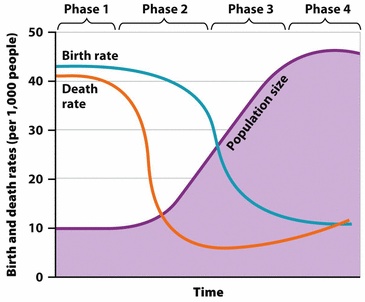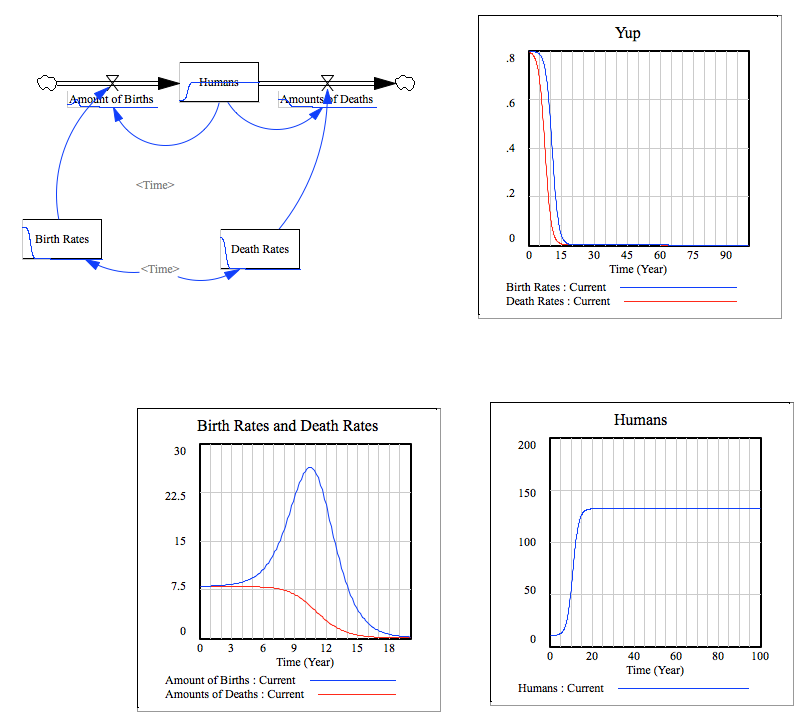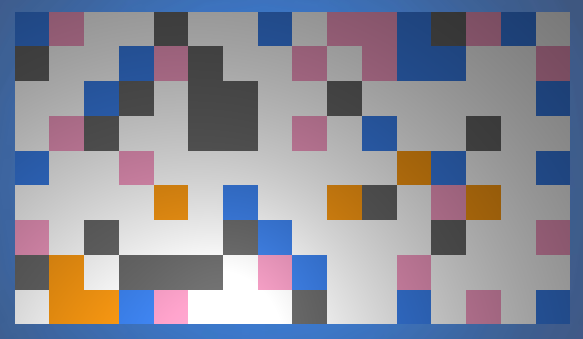Human Demographic Transtion
Description
There are four stages. Stage one is a pre-industrial society and has a low population and both high birth rates and high death rates. The second stage is the transitional stage and population increases rapidly. The birth rate stays the same while there is a decline in the death rate caused by the increased food production and improved medical care. The next stage is the industrial stage, where the birth rate declines. The population size starts to stabilizes as women are given more rights, status, and opportunities outside of homemaking. The last stage is the post-industrial stage, when population is stable with small fluctuations. This is caused by the birth and death rates being low and similar.

In order to model this change we used both vensim and agent cube. The demographic transition model makes an s-curve (logistic function), so we had to implement a lot of variables.
In the vensim model, we chose to make the variables birth rate, death rate, amount of births, amount of deaths, humans, and time. We wanted the simulation to be realistic but decided a low initial number of humans and fixed equations of the birth and death rates. The anchor variable is time, it is linear and is independent and measured by timesteps of one. The Birth and Death rates change based on the time and given logistic function. The amount of births variable is the product of the amount of humans, which is initially 10, and time-step x and the birth rate. The amount of deaths variable is the product of the amount of humans at time-step x and the death rate. Finally, the humans variable is equal to the amount of births minus the amount of deaths. This gives us a graph of human population that starts of low and stable, then increases quickly, begins to slow down, and finally level off with a high and stable population.
The Vensim Model This link will download the model of the Human Demograchic Transtion. It requires Vensim.

In the AgentCubes model children are the gray squares, adult women are pink and adult men are blue, and the elders are orange. The children are made when a mommy and daddy love each other very much, so like half the time. Every time time-step, there is a 50 percent chance of a child being born. The children have a 3 percent chance of dieing, similar to the infant mortality rate countries in the third and fourth stages of the Human Demographic transition. They will stay a child until they have matured to the age of 18, they have a 55 percent chance of becoming a adult male and a 45 percent chance of becoming a female. This is to reflect that most babies that are born male. In the model, being a male gives you a higher death rate of 5 percent than females 4 percent, similar to real life. From time-step 18 through 60, males will seek out females, when next to each other they will have a child 50 percent of the time. When the adults move on to the age of 60, they lose the ability to have kids and become elders. Elders have a 6 percent chance of dying. We had to kill off old people because we were running out of space on the model.

 Fall Project Website
Fall Project Website